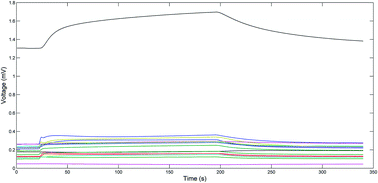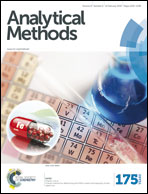Comparison and data fusion of an electronic nose and near-infrared reflectance spectroscopy for the discrimination of ginsengs
Abstract
This paper reports a hybrid system consisting of a homemade electronic nose system (E-nose) with a sensor array of 16 metal-oxide sensors and a near-infrared reflectance spectroscopy (NIRS) system for discriminating different kinds of ginsengs. 315 samples from 9 kinds of ginsengs were measured by using both systems with simple sample pretreatment. Six commonly used features were extracted from each sensor in the E-nose sensor array. Principal Component Analysis (PCA) was used to reduce the dimension of NIRS data. Then, models were built and trained with a support vector machine separately using datasets of the two systems. The classification performances of individual systems were optimized and compared. The advantages and disadvantages of the two systems were demonstrated by comparing empirical probability distributions in the category of predict labels for all samples. Finally, new weighted feature-level data-fusion and Dempster–Shafer-theory based decision-level data-fusion approaches for the hybrid system were separately exploited. The results showed that the hybrid system achieved an optimal classification accuracy of 99.58% with weighted feature-level fusion and 99.24% with decision-level fusion, which significantly outperformed the performance of individual systems (90.18% by the E-nose and 97.98% by NIRS) by the Student's t-test (p < 0.001).


 Please wait while we load your content...
Please wait while we load your content...